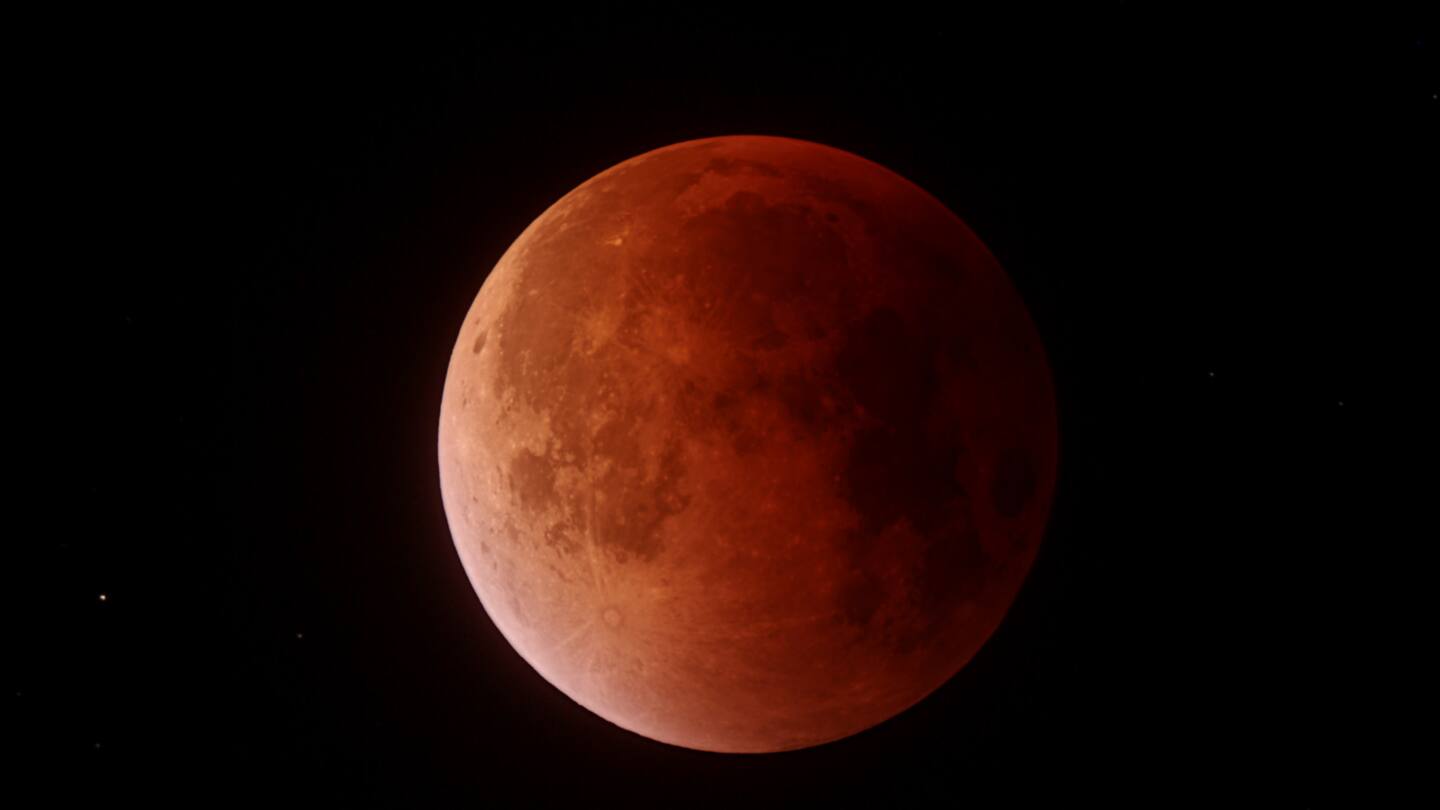
The moon will turn red during November's total lunar eclipse
What's the story
Are you ready to witness this year's last total lunar eclipse on November 8, 2022? A full lunar eclipse occurs when the sun, moon, and earth have all aligned in a way that the moon gets covered by the earth's shadow. On Tuesday, the moon will pass into the earth's shadow and turn red. The next total lunar eclipse will occur in 2025.
Definition
What is a total lunar eclipse?
A total lunar eclipse occurs when the full moon passes through the Earth's shadow region. The Earth comes between the sun and the full moon and blocks the direct rays of the sun from lighting up the moon. During this, the moon falls on the Earth's darkest shadow part called the umbra. The moon gets a reddish hue when it is within the umbra.
Twitter Post
Make sure you witness this eclipse
On November 8, 2022, the Moon will pass into Earth’s shadow and turn red. This will be the last total lunar eclipse for about 3 years, so be sure to check it out if it’s visible in your area.
— NASA Moon (@NASAMoon) October 27, 2022
Learn more: https://t.co/zetjapudzV pic.twitter.com/PJ0AuQrfEC
Countries
Countries which will be able to witness the celestial event
The lunar eclipse in its totality will not be observed from everywhere. However, some countries in Latin America will be able to witness it. In India, Kolkata, Kohima, Agartala, Delhi, Guwahati, Mumbai, Bengaluru, Nagpur, and Srinagar will be able to see the celestial event. Pakistan, Afghanistan, parts of Russia, North, and South America, and Australia will also see it.
Information
The timing of the total lunar eclipse in India
The partial lunar eclipse will start at 2:39 pm. Following this, the total lunar eclipse will start at 3:46 pm. The maximum total lunar eclipse will occur at 4:29 pm and it will end at 5:11 pm. The moonset time will be at 6:19 am.
How to watch
How to watch the total lunar eclipse?
Solar eclipses require special glasses and they can only be seen for a few minutes in a limited area. However, a total lunar eclipse lasts over an hour and you can see it if the sky is clear. You won't need any special equipment to observe the phenomenon. You can use a telescope or binoculars to enhance the view and the red color.
Lunar eclipses
Some other types of lunar eclipses
Apart from the total lunar eclipse, there are two other types of lunar eclipses. Check them out:- Partial lunar eclipse - This phenomenon occurs when the earth moves between the full moon and the sun and is not aligned correctly. Penumbral eclipse - This happens when the outer shadow of the earth falls on the moon, but most of it is illuminated by sunlight.